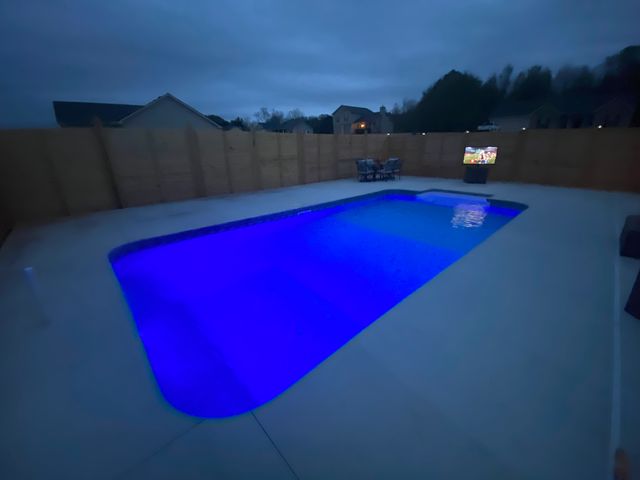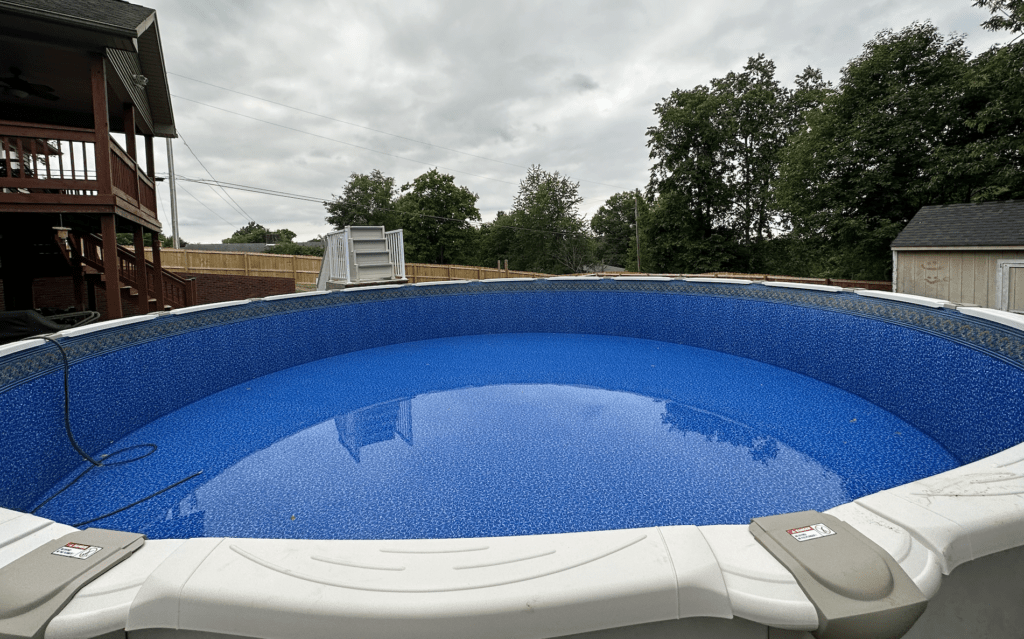It’s summer and new pool owners are asking themselves the same question, “How do I keep my pool clean?”.
While at Agape we install pools – not clean them, we’ve also been around since 2018 and have seen what pool owners do best to maintain their pools.
We’ve also seen what happens when new pool owners don’t take care of their pools, and the thousands of dollars worth of damage that brings.
Pool maintenance, just like pool installation is incredibly important for keeping your pool area clean and safe.
This is a guide for new pool owners on the best practices to keep their new pool clean, clear, and perfect all summer.
1.) Regular Skimming and Cleaning

The best way to keep your pool clean is to get debris out from the surface of your pool as soon as possible.
Besides it just looking dirty – debris like leaves, insects, and pollen can cloud your pool’s water and affect its chemistry.
Use a skimmer to remove surface debris daily, and clean out the strainer baskets weekly to improve circulation and reduce chlorine demands.
You can also vacuum the pool every week to keep the floor clean.
Luckily, there are many low-cost pool services available for a few hundred dollars a month whose job it is to conduct weekly pool cleanings.
2.) Maintain the Right Chemical Levels
The chemistry of your pool water is a delicate balance that needs regular monitoring.
You should pool water at least once a week to see if the chemical balance is just right or needs improvement.
This is important because without the right chemical balance, your pool can quickly get dirty or not be as safe for those with sensitive skin.
Luckily, most pool cleaning services also offer this. Some of the chemicals they test for include:
- pH Level: The ideal pH level for pool water is between 7.2 and 7.8. This range ensures maximum efficiency of the chlorine and comfort for swimmers.
- Chlorine: This chemical kills pathogens and bacteria. Maintaining proper chlorine levels is essential to prevent algae and keep the water clear.
- Alkalinity: Aim for an alkalinity between 100-150 ppm to help stabilize the pH level.
- Calcium Hardness: Proper levels (200-400 ppm) prevent plaster damage and help manage the water’s clarity.
- Cyanuric Acid: Protects chlorine levels from the sun and should be maintained between 30-50 ppm.
3.) Optimize Your Filtration System

A pool’s filtration system helps you maintain clean and clear water. It starts with water being drawn from the pool through skimmers and a main drain, then pushed by a pump through a strainer that catches large debris.
The heart of the system is the filter, which can be a sand filter, cartridge filter, or diatomaceous earth (DE) filter. Sand filters capture debris within the sand bed and require periodic backwashing to clean out accumulated dirt.
Cartridge filters use a pleated polyester cartridge to trap debris and need regular cleaning and replacement. DE filters utilize a fine powder to trap particles on a grid and also require backwashing and replenishment of DE.
After filtration, the clean water is returned to the pool through jets that help circulate water and distribute chemicals like chlorine, which sanitizes the pool.
The entire system relies on proper maintenance, including regular cleaning of filters, checking the pump and the motor.
As a new pool owner, you should make sure that your filtration system is up-to date and working properly.
You can see if the filter is working well by regularly checking the water flow and pressure gauges for any unusual changes that might indicate clogs or leaks.
Clear water typically signifies effective filtration, but cloudy water suggests issues with debris capture. Of course, if you have a problem you should consider a professional inspection for thorough maintenance and to catch subtle problems.
4.) You Should Watch For Algae
Algae in pools can appear for a lot of reasons, but it mostly revolves around maintenance and environmental conditions.
For example, if the chlorine levels in the pool are insufficient, it reduces the pool’s ability to combat algae growth. Water circulation is another reason – since stagnant water can lead to stagnant areas where algae can easily take hold and multiply.
Inefficient filtration also contributes to algae issues, as a filter that isn’t running adequately or is clogged cannot effectively remove algae spores from the water.
That’s because algae feeds on nutrients such as phosphates and nitrates, which can be introduced into the pool from external sources like lawn fertilizers or decaying organic matter.
Environmental factors like warm, sunny weather provide ideal conditions for algae growth, especially in pools that are exposed to direct sunlight for extended periods.
Improper chemical balances, particularly pH levels that are too high or too low, can hamper the effectiveness of sanitizers like chlorine, further facilitating the growth of algae.
Regular maintenance, including thorough cleaning and brushing of the pool surfaces, maintaining proper chemical levels, and ensuring adequate filtration and circulation, are essential practices to prevent and control algae in swimming pools.
If algae do appear, treating the pool with the appropriate chemicals and adjusting the pH can help restore clear and healthy pool water.
5.) Use a Pool Cover
If you want to keep the gross critters out of your pool – you get a pool cover.
Not this sounds straightforward – but you’d be surprised how many homeowners forget this as the summer ends and they don’t use their pool as often.
When the pool is not in use, covering it drastically reduces the amount of debris entering the water and can also reduce evaporation and chemical use.
A cover is especially useful during off-season months.
This is pretty self-explanatory really. Safety concerns aside for small children and animals, a cover for your pool is essential no matter where you are in the country.


